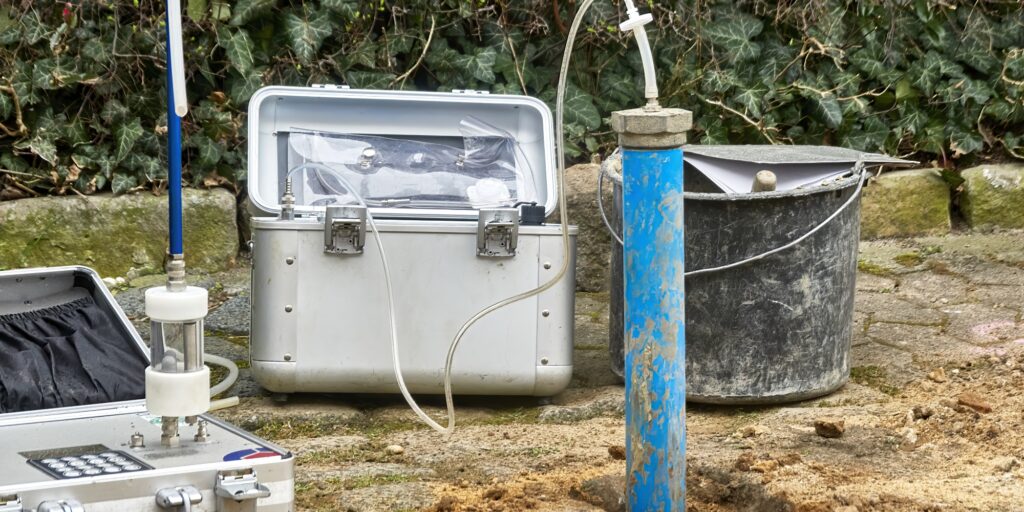
Guide
Air Sampling Pumps: What They Are, How They Work & More
Air sampling pumps are portable devices that pull a measured volume of air through specific media to capture contaminants for lab analysis, enabling accurate exposure assessment and effective control decisions.
In refineries, chemical plants, metal fabrication, construction, pharma, and utilities, airborne hazards aren’t just inconvenient—they drive real risk. Pumps provide defensible data for compliance, investigations, and program improvements, outperforming quick screens when accuracy and traceability matter.
Personal air sampling pumps ride with the worker to quantify task and shift exposure, supporting decisions on ventilation, work practice changes, and respiratory protection under OSHA- and NIOSH-referenced methods.
Other common terms for air sampling pumps include:
- Personal air sampling pumps
- Wearable air sampling pump
- Industrial air sampling pump
- NIOSH air sampling pump
- Low flow air sampling pump
- High flow air sampling pump
- Portable air sampling pump
- IH air sampling pump
In this guide, we cover how air sampling pumps work, where and when to use them, the key regulations that govern sampling, and more.
Use the menu to jump around, or keep reading for the full guide.
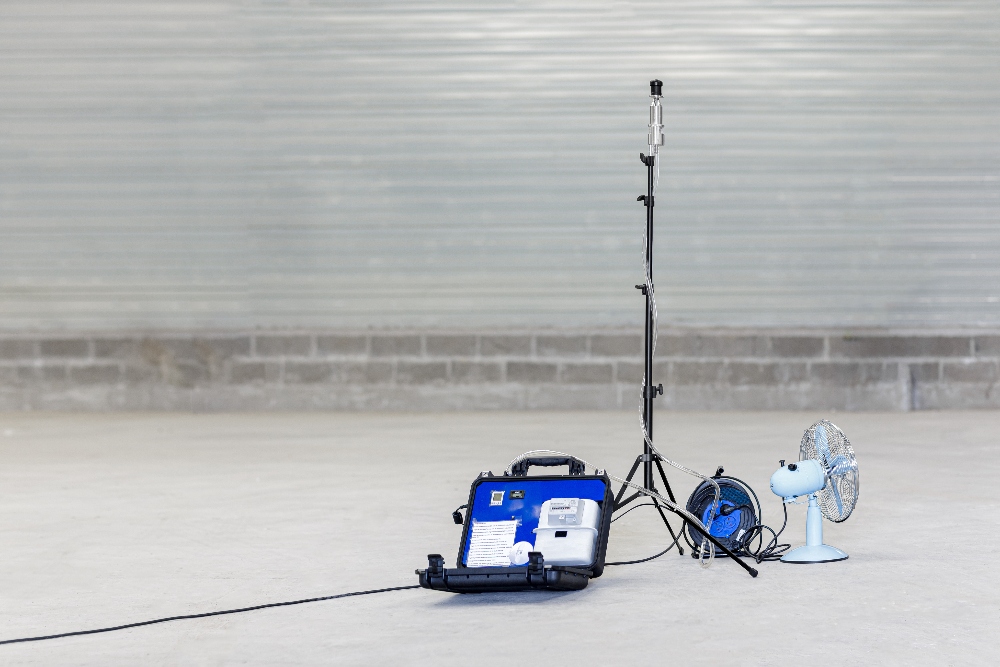
Table of Contents
What Is An Air Sampling Pump?
Air sampling pumps are portable instruments that draw a controlled volume of air through selected media so a laboratory can measure contaminants for exposure assessment and compliance decisions.
They are used for compliance sampling, root-cause investigations, to confirm direct-reading results, and to create defensible records that stand up to audits and enforcement.
- Typical targets. Dusts, fibers, mists, metals, and gases or vapors via sorbent tubes
- Common outputs. Sample volume, run time, flow rate, and method ID
- Media options: filters and cassettes, cyclones for respirable fractions, sorbent tubes, and badges
- Sampling contexts. Personal, area, task-based, or full-shift monitoring
- Chain of custody and accredited lab analysis to produce reportable results
Personal air sampling pumps are worn by the worker at the breathing zone to quantify individual exposure, while area or ambient samplers characterize conditions in workspaces, near processes, or at facility boundaries.
How Do Air Sampling Pumps Work?
Air sampling pumps pull air at a set flow rate through a chosen medium to collect contaminants for lab analysis.
A feedback loop holds target flow as filter loading and back-pressure change.
Sample volume equals flow rate multiplied by run time, which drives detection limits.
- Air enters the inlet and travels through tubing toward the sampling train.
- Media such as a filter cassette, cyclone with filter, or a sorbent tube captures the target contaminant.
- A flow sensor measures actual flow and sends that signal to the controller.
- The controller compares measured flow to the setpoint and commands the motor or pump drive.
- The motor adjusts speed or torque to maintain constant flow against back-pressure.
- Run data are logged, the end flow is documented, and media are sealed and sent to the lab.
Flow Modes: Constant Flow vs Constant Pressure
Flow mode dictates how the pump responds as resistance rises.
- Constant flow holds a fixed rate to meet method requirements.
- Constant pressure maintains a set differential where the setup expects pressure control.
Flow Ranges And Applications: Low-Flow vs High-Flow
Match flow to media and contaminant.
Low-flow (mL/min to ~500 mL/min) suits sorbent tubes and badges for gases and vapors.
High-flow (~1–5 L/min) suits filters and cyclones for dusts, mists, and respirable fractions.
Personal air sampling pumps ride at the breathing zone for worker exposure, while area samplers characterize spaces or processes.
Key Components
Think in systems: generation and control of airflow, media handling, and defensible records.
- Air mover and control: pump, motor/drive, flow sensor, closed-loop controller.
- Sampling hardware: cassettes, tube holders, cyclones, clips/holsters, durable housing, intrinsic safety options.
- Power and data: battery and power management, interface, logging for flow, time, alarms, and run metadata.
Specs That Matter
Focus on what protects data quality and uptime.
- Flow range/accuracy and stability under expected back-pressure.
- Back-pressure capability matched to media, rate, and shift length.
- Pulsation control where methods require smooth flow.
- Battery life and charge strategy (hot-swap/external power if needed).
- Data logging resolution and connectivity (Bluetooth/app), firmware reliability.
- Environmental rating/temperature, intrinsic safety (Class I Div 1, ATEX/IECEx), and service/calibration support.
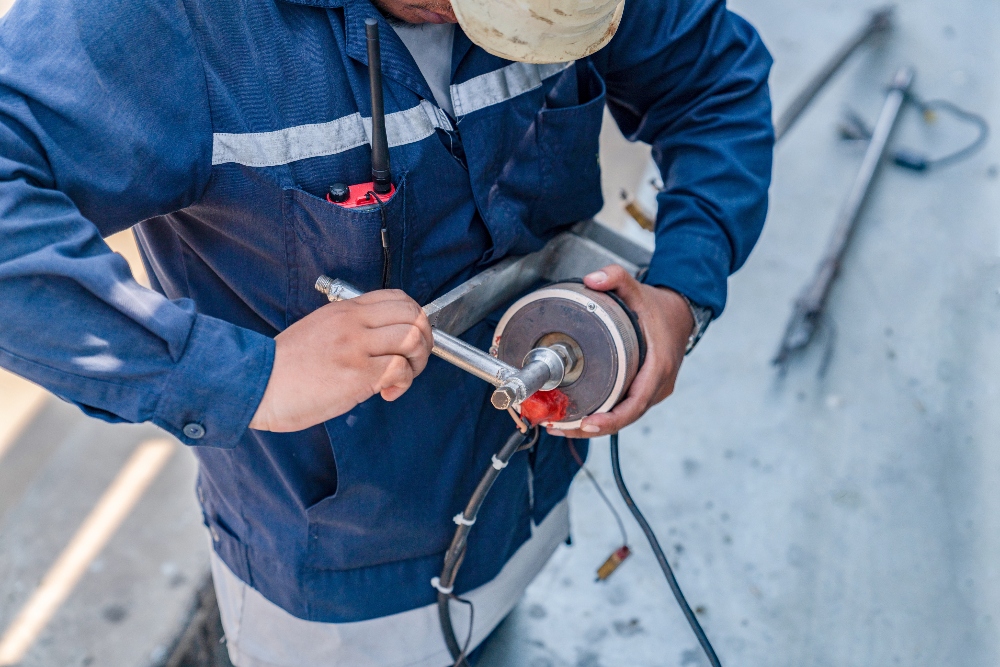
Comparison To Other Monitors
Air sampling pumps provide lab-analyzable samples and defensible exposure results that tie directly to validated methods.
Direct-reading instruments deliver instant readings for screening, source finding, and controls feedback.
Most programs deploy both to balance accuracy, speed, and coverage.
| Tool | What It Provides | When To Use It |
|---|---|---|
| Personal air sampling pumps | Lab-analyzed mass or chemistry with method-driven flow and time | Compliance sampling, investigations, confirmation of screening data |
| Direct-reading particulate monitor (PM) | Instant concentration trends (e.g., PM2.5/PM10) | Source finding, controls tuning, real-time alerts |
| PID/FID or electrochemical gas detector | Instant indication for VOCs or specific gases | Leak checks, entry monitoring, hot-spot mapping |
| Area/ambient sampler | Location-based trends and perimeter data | Process monitoring, boundary checks, community/area profiling |
| Continuous fixed monitor | Always-on detection with alarms and logs | High-risk areas, automation, long-term trend analysis |
How To Use These Tools Together
Pair instant-read monitors with lab-grade sampling to get both speed and certainty.
Use this simple playbook:
- Screen and tune in real time: deploy direct-reading PM, PID/FID, or gas detectors to locate sources, set alarms, and verify engineering or administrative controls during work.
- Confirm and document exposure: run personal air sampling pumps on the affected tasks or full shifts to produce defensible, method-driven results for compliance and investigations.
Layer area or ambient monitors to map hotspots and choose who and when to sample, then iterate—screen, adjust, confirm—until exposures are controlled across the shift and facility.
6 Industries that Rely on Air Sampling Pumps
Well-chosen air sampling pumps allow a range of industries to match media and flow to the contaminant, then pair results with screening data for faster, defensible decisions.
Most programs combine personal air sampling pumps with area and direct-reading tools to target sources, guide placement, and confirm compliance.
Here are 6 sectors that rely on dust monitoring to keep people safe.
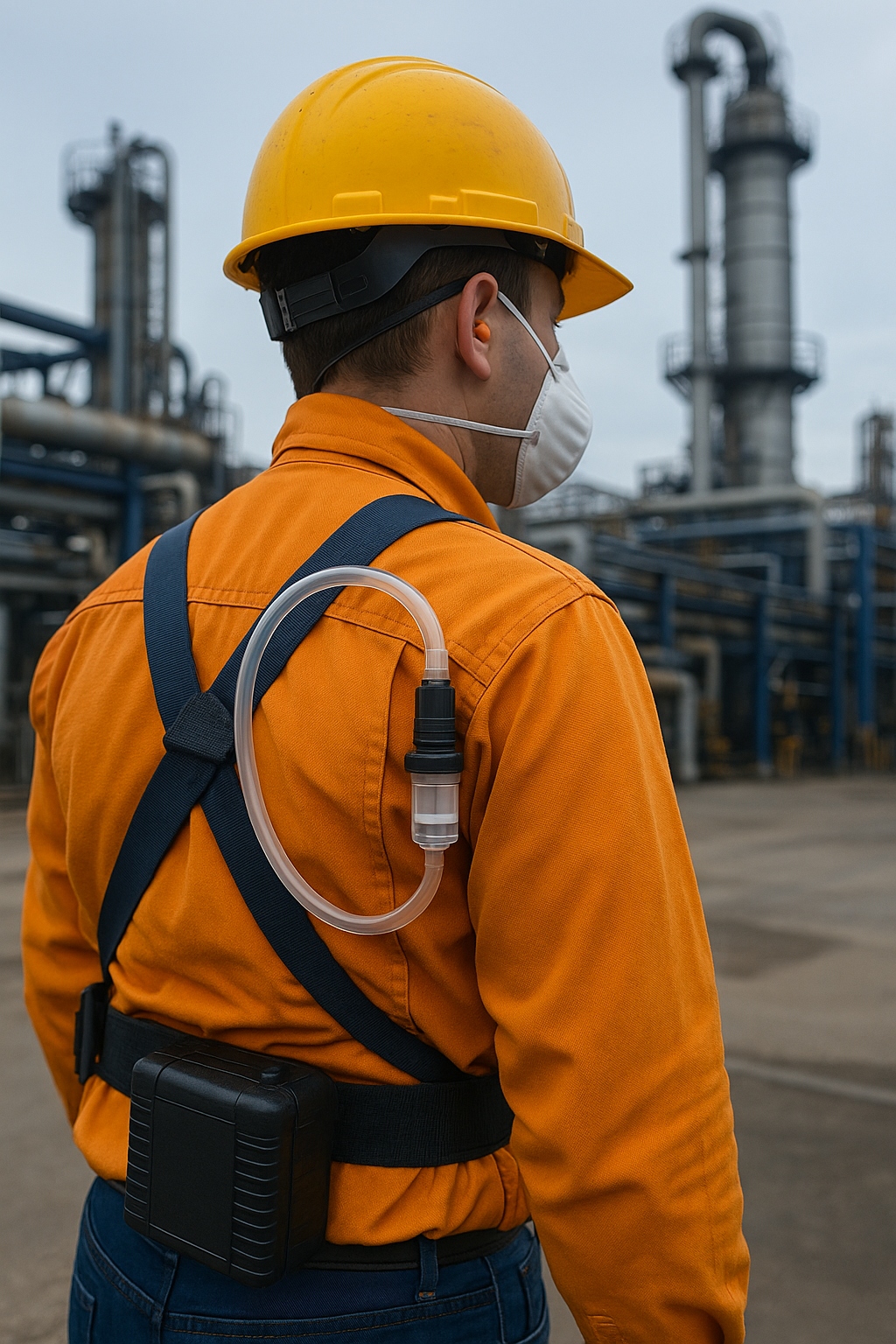
1. Oil, Gas & Petrochemical
Turnarounds, tank cleaning, and catalyst handling can release VOCs, H2S, and respirable dust near confined equipment.
Low-flow sorbent tubes and high-flow cyclones often run alongside gas detection for a complete picture.
Air sampling in oil, gas & petrochemical includes:
- Task-based personal sampling during tank entry, degassing, and catalyst changeouts (low-flow tubes for VOCs, high-flow filters for dust)
- Area sampling near loading racks, flare systems, and unit boundaries to profile processes
- Pre/post-control studies to verify ventilation, enclosure, and purge effectiveness
- Chain-of-custody workflows to support incident investigations
2. Utilities & Power Generation
Boiler maintenance, ash handling, and fuel changeouts introduce metals, dust, and gases.
Programs mix high-flow particulate sampling with targeted low-flow VOC/isocyanate checks.
Air sampling in utilities & power generation includes:
- Respirable dust sampling for ash handling, outages, and emissions control work
- Area sampling around turbine decks, boiler houses, and fuel systems
- Turnaround studies to sequence crews and minimize overlap at hotspots
- Verification of LEV and temporary containment during outages
3. Mining & Quarrying
Crushing, screening, and haul roads generate persistent dust with respirable fractions and silica risk.
High-flow filters with cyclones dominate, while targeted VOC checks may apply near fuel or solvent use.
Air sampling in mining & quarrying includes:
- Full-shift respirable dust sampling for drillers, crusher operators, and maintenance crews
- Area sampling at crushers, transfer points, and enclosed cabs to evaluate controls
- Event-based runs during blasting, with meteorology notes for context
- Pre/post-maintenance checks on shrouds, LEV, and water suppression
4. Manufacturing & Metalworking
Welding, grinding, and thermal cutting produce mixed aerosols and metal fumes.
High-flow filters capture particulates; low-flow sorbent tubes cover solvents and coatings work.
Air sampling in manufacturing & metalworking includes:
- Breathing-zone sampling for welders, grinders, painters, and finishing lines
- Area checks at cutting tables, baghouses, and make-up air intakes
- Time-history runs to pinpoint peak tasks for scheduling or shielding
- Verification after filter changeouts, process changes, or enclosure upgrades
5. Construction & Demolition
Cutting, drilling, and grinding create short, intense silica and nuisance dust peaks.
High-flow cyclone sampling complements real-time alarms to trigger wet methods and tool changes.
Air sampling in construction & demolition includes:
- Task-based respirable dust sampling during concrete cutting, tuckpointing, and demolition
- Short-duration runs aligned to worst-case tasks and crew rotations
- Area sampling at boundaries to address neighbor concerns and permits
- Control validation for wet cutting, shrouds, and vacuum systems
6. Pharmaceuticals & Biotech
Weighing, blending, and capsule filling can release potent compounds at low limits.
Low-flow tubes and treated filters support speciated analysis; containment and PPE programs rely on proof.
Air sampling in pharmaceuticals & biotech includes:
- Personal task sampling during compounding and weigh-in/dispense with low-flow media
- Area sampling at isolator glove ports, transfer hatches, and airlocks
- Change-control studies after equipment or recipe modifications
- Routine verification in OEL-driven programs and cleaning validation
Workplace Regulations and Compliance
Air sampling isn’t just good practice—it’s how employers document exposure with lab-defensible results.
In many jobs, personal sampling is required or strongly recommended to meet occupational health rules and internal standards.
This section outlines the key frameworks for worker exposure (OSHA, NIOSH/ACGIH), the validated methods that govern media and flow, pump performance standards, and record keeping requirements.
Key Thresholds at a Glance
| Standard | Substance / Topic | Limit / Requirement | Averaging / Scope | Authority / Reference |
|---|---|---|---|---|
| OSHA PEL | Respirable Crystalline Silica | 50 µg/m³ | 8-hour TWA | 29 CFR 1910.1053 • 29 CFR 1926.1153 |
| OSHA Action Level | Respirable Crystalline Silica | 25 µg/m³ | 8-hour TWA | 29 CFR 1910.1053 |
| OSHA PEL (PNOR) | Particulates Not Otherwise Regulated — Total / Respirable | 15 mg/m³ (total) • 5 mg/m³ (resp.) | 8-hour TWA | OSHA Table Z-1 • OSHA Table Z-3 |
| OSHA PEL | Hexavalent Chromium (Cr VI) | 5 µg/m³ | 8-hour TWA | 29 CFR 1910.1026 |
| Pump Performance | Personal Sampling Pumps | Flow accuracy, stability, back-pressure, pulsation tests | Instrument design/performance | ISO 13137:2022 |
| Sampling Methods | Validated IH Methods | Media, flow rate, volume, QA/QC, reporting | Personal/area sampling | NIOSH NMAM (5th ed.) • OSHA SAM |
| Records | Employee Exposure Records | Retain and provide access | Typically 30 years | 29 CFR 1910.1020 |
OSHA and NIOSH/ACGIH Exposure Limits
OSHA substance standards and Table Z limits drive when and whom to sample, how often to reassess, and what controls to implement.
Action levels trigger initial and periodic monitoring, with results used to verify engineering and administrative controls and to determine respirator needs.
Many employers also benchmark against NIOSH RELs and ACGIH TLVs to set more conservative internal targets.
→ See OSHA 1910.1000, Annotated Table Z-1, and Annotated Table Z-3.
Methods and Pump Performance Standards
Validated methods (NIOSH/OSHA) specify media, flow rate, sample volume, calibrations, blanks, and documentation for defensible results.
Air sampling pumps must deliver stable, accurate flow through the actual sampling train; ISO 13137 defines performance expectations for battery-powered personal pumps, including back-pressure handling and pulsation control.
→ See NIOSH NMAM, OSHA Sampling & Analytical Methods, and ISO 13137.
Documentation, Calibration, and Audit Readiness
Defensible sampling hinges on traceability. Capture who/what/where/when, method ID, media lot, pre/post flow checks, total time/volume, field notes, and chain of custody.
Use a primary standard for pre- and post-calibration with the full train attached, record acceptance criteria, and keep time-stamped logs aligned to your SOPs.
→ See 29 CFR 1910.1020 – Exposure Records.
Ambient and Perimeter Context
While personal sampling via air sampling pumps governs worker exposure decisions, ambient standards typically rely on fixed or equivalent monitors for community or fence-line trends.
Pair perimeter data with personal sampling to link sources, validate controls, and address complaints without conflating ambient and occupational limits.
→ See EPA PM NAAQS overview.
Personal vs. Area Air Sampling: What’s the Difference?
Choose the approach that answers your decision: quantify an individual’s exposure or understand conditions in a place.
- Personal sampling: if you need to know what a worker actually inhales, use personal air sampling pumps at the breathing zone.
- Area sampling: if you need to characterize a zone, process, or perimeter, use area air sampling setups on fixed mounts or tripods.
Personal Sampling (Wearable)

Measures breathing-zone exposure over full shifts or targeted high-risk tasks. Results are lab-analyzed and map to occupational limits.
Typical media/flows: low-flow sorbent tubes for gases/vapors; high-flow filters with cyclones for respirable dust/silica.
Provides data like:
- Total volume and run time tied to a validated method
- Task or shift exposure (e.g., 8-hour TWA), with notes on peaks/events
- Defensible records for controls verification and investigations
Common use cases:
- Cutting, grinding, abrasive blasting
- Painting/coatings and solvent handling
- Tank cleaning, catalyst changeouts, maintenance turnarounds
Area / Ambient Sampling
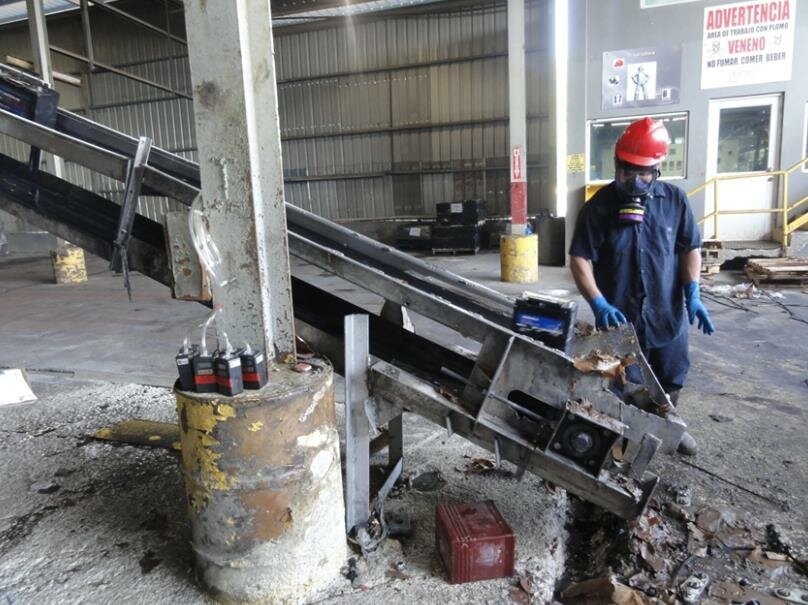
Quantifies location-based concentrations and trends around processes, boundaries, or community interfaces; results support operations and planning.
Typical media/flows: high-flow filters for particulates; low-flow sorbent tubes near suspected VOC sources.
Supports activities like:
- Process monitoring and boundary checks
- Hot-spot mapping and controls validation
- Event studies aligned to work, weather, or upsets
Common placements:
- Construction perimeters and refineries
- Waste/recycling transfer points and landfills
- Crusher decks, baghouses, silo heads, and loading areas
When To Use Both
Pair approaches when projects present both worker-exposure and site-impact risk.
- Sync time stamps across instruments and crews
- Log wind/activity context; note controls applied
- Screen with direct-reading tools, then confirm with lab-defensible personal samples
Pump Classes At A Glance
Use this quick map to match air sampling pumps to media and tasks.
- Low-flow (tens–hundreds mL/min): sorbent tubes and badges for gases/vapors; sensitive to leaks and pulsation.
- High-flow (~1–5 L/min): filters and cyclones for dusts, mists, respirable fractions; needs stable flow under higher back-pressure.
- Multi-flow / programmable: spans low- and high-flow with swappable trains; ideal for mixed-task sites.
- Intrinsically safe (IS): certified for hazardous locations (e.g., Class I Div 1, ATEX/IECEx) per site policy.
- Multi-channel / docking workflows: speed crew turnarounds; standardize setups, charging, and data downloads.
| Pump class | Typical flow | Media / targets | Where it shines | Watchouts |
|---|---|---|---|---|
| Low-flow | Tens–hundreds mL/min | Sorbent tubes, badges; VOCs, aldehydes, isocyanates | Task or shift sampling for gases/vapors with low LODs | Pulsation and leaks; breakthrough if volume too high |
| High-flow | ~1–5 L/min | Filters, cyclones; dusts, mists, respirable silica | Dust/respirable fraction sampling with stable flow under load | Back-pressure limits; cassette fit and cyclone orientation |
| Multi-flow / programmable | mL/min to multiple L/min | Swappable trains for tubes and filters | One fleet for varied tasks; fewer SKUs to manage | Complexity; ensure correct profiles and verification |
| Intrinsically safe (IS) | Low- or high-flow variants | Any media required by method in hazardous areas | Work in classified areas without waivers | Heavier/pricey; confirm certification matches site class/zone |
| Multi-channel / docking | Varies by model | Fleet charging, config, and data offload | Faster crew deployment; standardized setups | Dock availability; firmware/version control |
Best Practices for Air Sampling Programs
High-quality sampling combines clear objectives, disciplined QA/QC, and defensible records.
Use this playbook to design a program that stands up to review and supports day-to-day decisions.
1. Planning & Objectives
Start with the decision you need to make: exposure determination or screening, personal or area sampling.
Choose methods that align with target contaminants, expected ranges, and site constraints.
- Select validated methods and map media, flow, and volume to detection limits.
- List target contaminants by task/area and identify likely worst-case scenarios.
- Align sampling windows to shifts and task timing; capture representative crews.
- Set internal action levels and trigger points for resampling or controls.
- Define documentation outputs: who, what, where, when, method ID, and rationale.
2. Setup & Field Workflow
Assemble the full sampling train and place samplers where exposure occurs—at the breathing zone for personal runs.
Keep setup consistent so results remain comparable across shifts and sites.
- Stage media with lot IDs; mark holders/cassettes; pre-label chain-of-custody forms.
- Perform leak checks; verify tubing integrity and correct orientation for cyclones.
- Attach in the breathing zone; route tubing to minimize snagging and kinks.
- Set the flow setpoint and planned run time; document start time and conditions.
- Mid-run checks: confirm flow, notes on tasks/controls, alarms, and interruptions.
- End-of-run: record final flow, volume, and time; seal and label media for the lab.
Personal air sampling pumps ensure breathing-zone relevance; match them to media and method requirements.
3. Calibration, QA/QC & Verification
Traceable flow and complete records are non-negotiable for defensible results.
Calibrate with the full sampling train attached whenever the method requires it.
- Use a primary standard; document calibration certificates and due dates.
- Record pre- and post-sample flow checks; apply acceptance criteria and note drift.
- Include field blanks and duplicates; investigate outliers before reporting.
- Log alarms (loss of flow, high back-pressure) and corrective actions taken.
- Verify data transfer and timestamps; preserve raw logs with operator initials.
4. Data Integrity & Recordkeeping
Treat data as evidence and preserve context for audits and root-cause analysis.
Retain records per policy and regulation for exposure records and program history.
- Capture time-stamped logs, method IDs, instrument IDs, and firmware versions.
- Maintain chain-of-custody from sampling through analysis and reporting.
- Store metadata: operator, location, tasks, environmental notes, media lot numbers.
- Back up raw data to redundant storage with change control and versioning.
- Apply a clear naming convention and index for rapid retrieval during reviews.
5. Environmental Factors & Interferences
Control artifacts and document site conditions so results are interpretable and comparable.
Design sampling to minimize line losses, recirculation, and vibration.
- Record temperature and humidity; note process upsets and weather shifts.
- Minimize tubing length and tight bends; check for condensation or dust loading.
- Avoid obstructions and recirculation zones; set heights to reflect exposure.
- Stabilize mounts and clips; isolate from heat sources and spray streams.
- Document co-located direct-reading data used to guide placement or timing.
6. Maintenance & Troubleshooting
Reliability depends on routine care and fast recovery from faults.
Use a proactive schedule and a simple triage flow for field fixes.
- Maintain batteries: full-charge cycles, spares, and hot-swap options where supported.
- Inspect fittings and cassettes for seal integrity; replace worn tubing and clips.
- Respond to alarms: check for leaks, obstructions, incorrect media orientation.
- Verify flow sensor performance after firmware updates or repairs.
- Keep a spare pump and common consumables in the kit to avoid data gaps.
7. Alarms, Exceedances & Incident Response
Plan responses before thresholds are crossed so actions are timely and repeatable.
- Set operational action levels distinct from compliance limits; define notification paths.
- When alarms trigger, log activities, controls applied, and environmental context.
- Run root-cause analysis within a set window; document corrective and preventive actions.
- Issue a short after-action note linking data to decisions and outcomes.
8. Training, Roles & TCO
People and planning drive data quality and cost control.
- Provide role-based training with practical checkouts; refresh annually or after SOP changes.
- Define ownership for calibration, maintenance, data review, and reporting.
- Stock spares and consumables; plan turnaround time for service and calibration.
- Track total cost of ownership across equipment, media, lab, software, and labor.
Quick audit checklist
9. Integration & Reporting
Unify personal and area data so findings lead to clear actions and accountability.
- Consolidate air sampling pumps runs with direct-reading and area datasets in one timeline.
- Publish weekly summaries with trends, exceedances, and controls verified or pending.
- Track KPIs: uptime, valid-data percent, on-time calibration, investigations closed.
- Assign owners and due dates for follow-ups; review status in recurring safety meetings.

Air Sampling Pump FAQ
Here are answers to the most commonly asked questions about air sampling pumps.
How do air sampling pumps work?
They draw a controlled flow of air through media (filters, cyclones, sorbent tubes) to collect contaminants for lab analysis. A feedback loop holds the set flow against back-pressure so volume = flow × time stays accurate.
What flow rate should I use?
Follow the validated method for your target and media. Typical ranges: low-flow (tens–hundreds mL/min) for sorbent tubes; high-flow (~1–5 L/min) for filters/cyclones.
How long should I sample?
Long enough to reach method-specified volume and detection limits without overloading or breakthrough. Use task-based (minutes) for peaks or full-shift (hours) for TWAs, per method guidance.
What’s the difference between constant flow and constant pressure?
Constant flow holds a fixed rate as resistance changes—standard for most occupational methods. Constant pressure keeps a set differential where media geometry expects pressure control and flow may vary.
When do I need an intrinsically safe pump?
In hazardous locations where flammable gases, vapors, or dusts may be present by classification (e.g., Class I Div 1, ATEX/IECEx contexts). Use site hazard assessments to determine certification requirements.
How do I calibrate and verify flow?
Use a primary standard, with the full sampling train attached when required by the method. Document pre- and post-checks, apply acceptance criteria (e.g., ±5%), and note drift or corrective actions.
How should I handle and ship samples to the lab?
Seal and label media immediately; record method ID, lot numbers, start/stop times, and total volume. Follow hold times, temperature requirements, and chain-of-custody procedures.
What’s the difference between personal and area sampling?
Personal air sampling pumps ride at the breathing zone to quantify an individual’s exposure.
Area samples characterize locations, processes, or boundaries and help guide placement/timing of personal samples.
Should I rent or buy air sampling pumps?
Buy for frequent use, controlled maintenance, and standardized fleets. Rent for peak demand or specialized needs.
Consider utilization, service turnaround, firmware/data needs, and total cost of ownership.
What maintenance and troubleshooting should I plan for?
Keep batteries healthy; inspect seals, tubing, and cassette fit. Update firmware per vendor guidance.
If alarms occur (loss of flow, high back-pressure), check for leaks, obstructions, incorrect media orientation, or depleted batteries.
